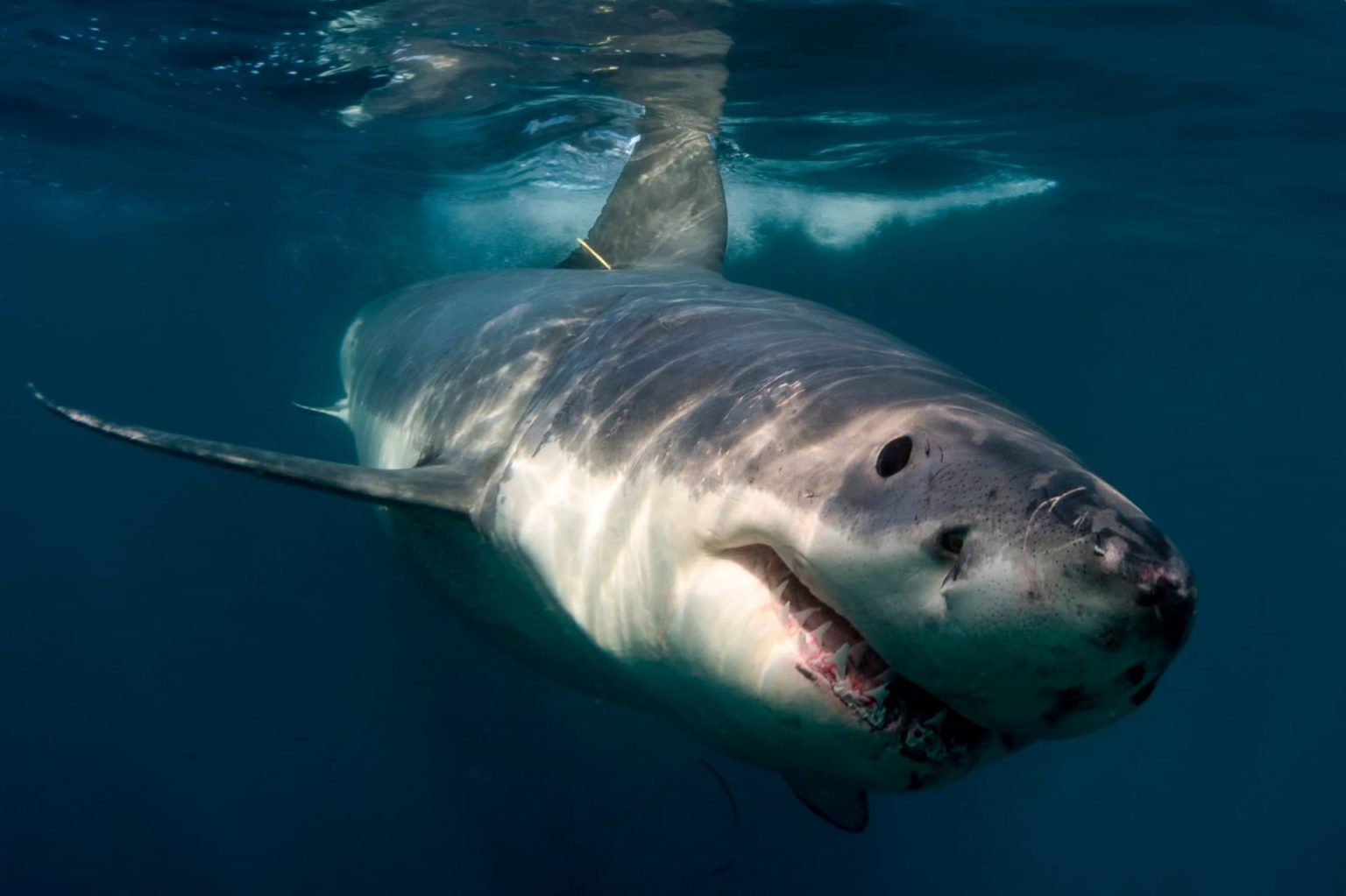Great White Sharks Don Silcock talks Great White Sharks in this months installment of Big Animal Diving
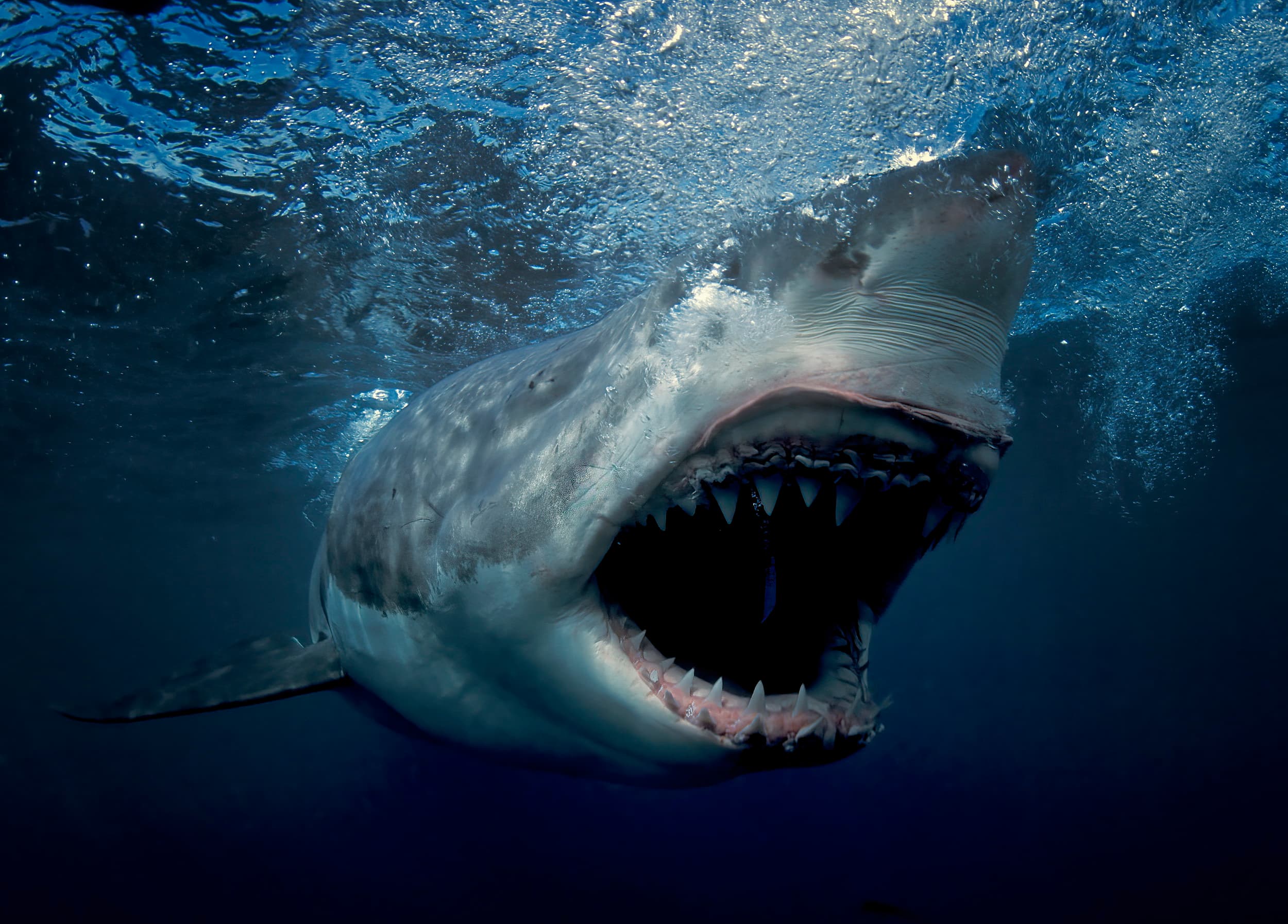
Australia, our great brown land down-under, is known for many things – the beaches, the Red Centre, the Great Barrier Reef and the seemingly endless supply of dangerous creatures…
However, few of those creatures are considered as terrifying, intimidating and downright BIG as the great white shark.
White pointers, as they are often referred to locally, are portrayed as brutally efficient, man-eating monsters that constantly patrol our coastlines looking for unsuspecting swimmers and surfers – much like Freddy Krueger stalks Elm Street looking for victims to participate in the latest nightmare!
And when they do strike, that latest nightmare is guaranteed headline coverage in the tabloid media and the nightly “news”.
But what is the truth about the great white and are they really the killing machines they are portrayed as?
Sharks and the Sea
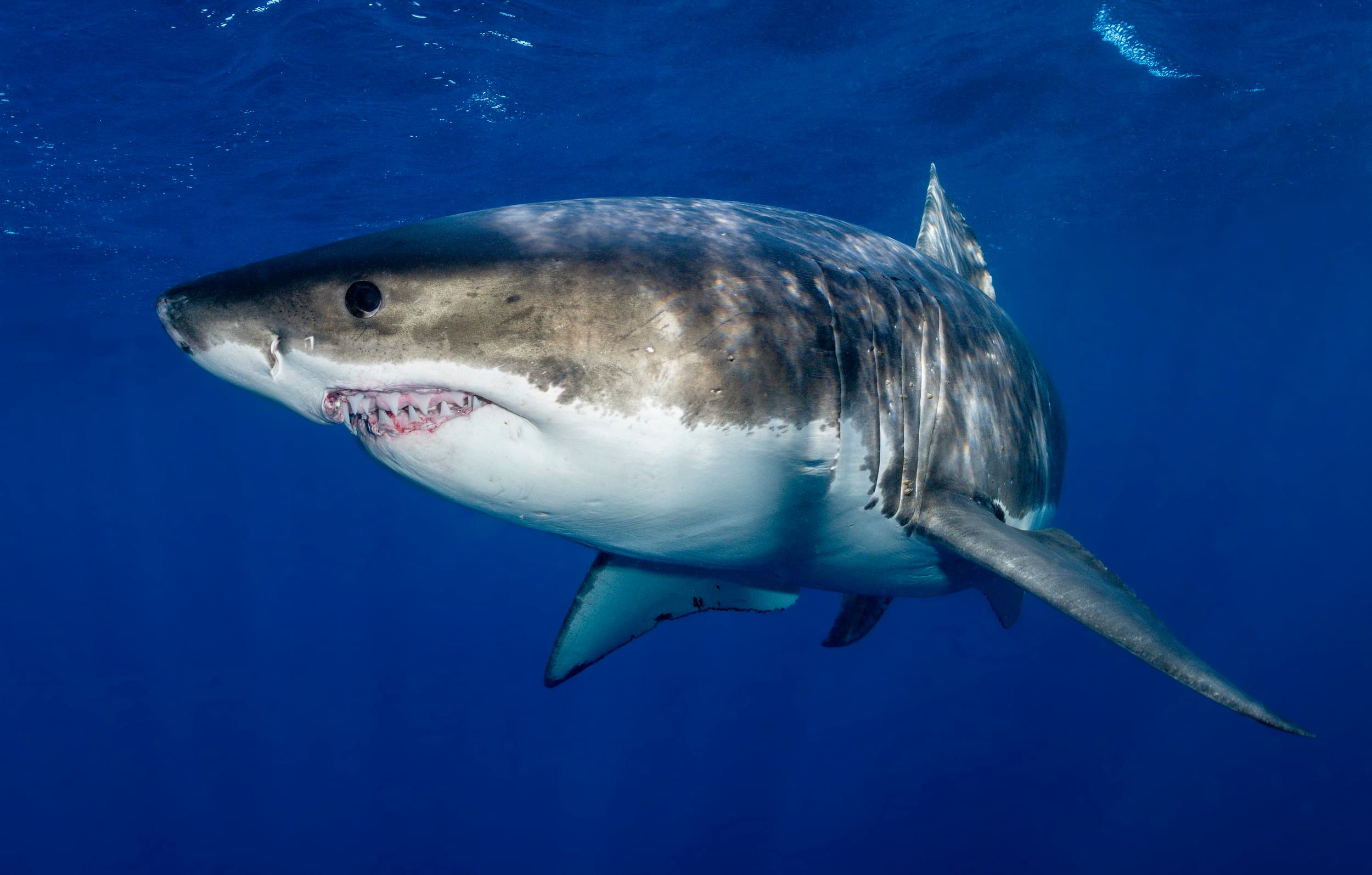
There are hundreds of shark species around the world, most with different characteristics. But generally they are all highly evolved creatures, whose basic role is probably best described as cleaning up the dead, the dumb and the dying to keep the oceans vibrant and healthy.
Only a few of those many sharks are potentially dangerous to humans and the top three on the list are great whites, tigers and bull sharks – in that order…
Having personally dived with all three on numerous occasions, plus great hammerheads and oceanic whitetips, I can tell you that bull sharks are by far the creatures I am most wary about…
Both great whites and tigers are significant animals with incredible presence and powerful jaws capable of biting humans into two, but that said we are simply not their food of choice.
Great whites, while generally carnivorous, love nothing more than high-fat seals and sea-lions, whereas tigers have a reputation for eating almost anything but have a sweet-tooth for sea turtles, which they sneak attack from below and can bite clean in half.
Bull sharks however are incredibly sneaky and opportunistic, plus they can be very aggressive and are the only big shark that can live in both fresh and sea water, with an estimated 500 of them living in the Brisbane River!
That Reputation!
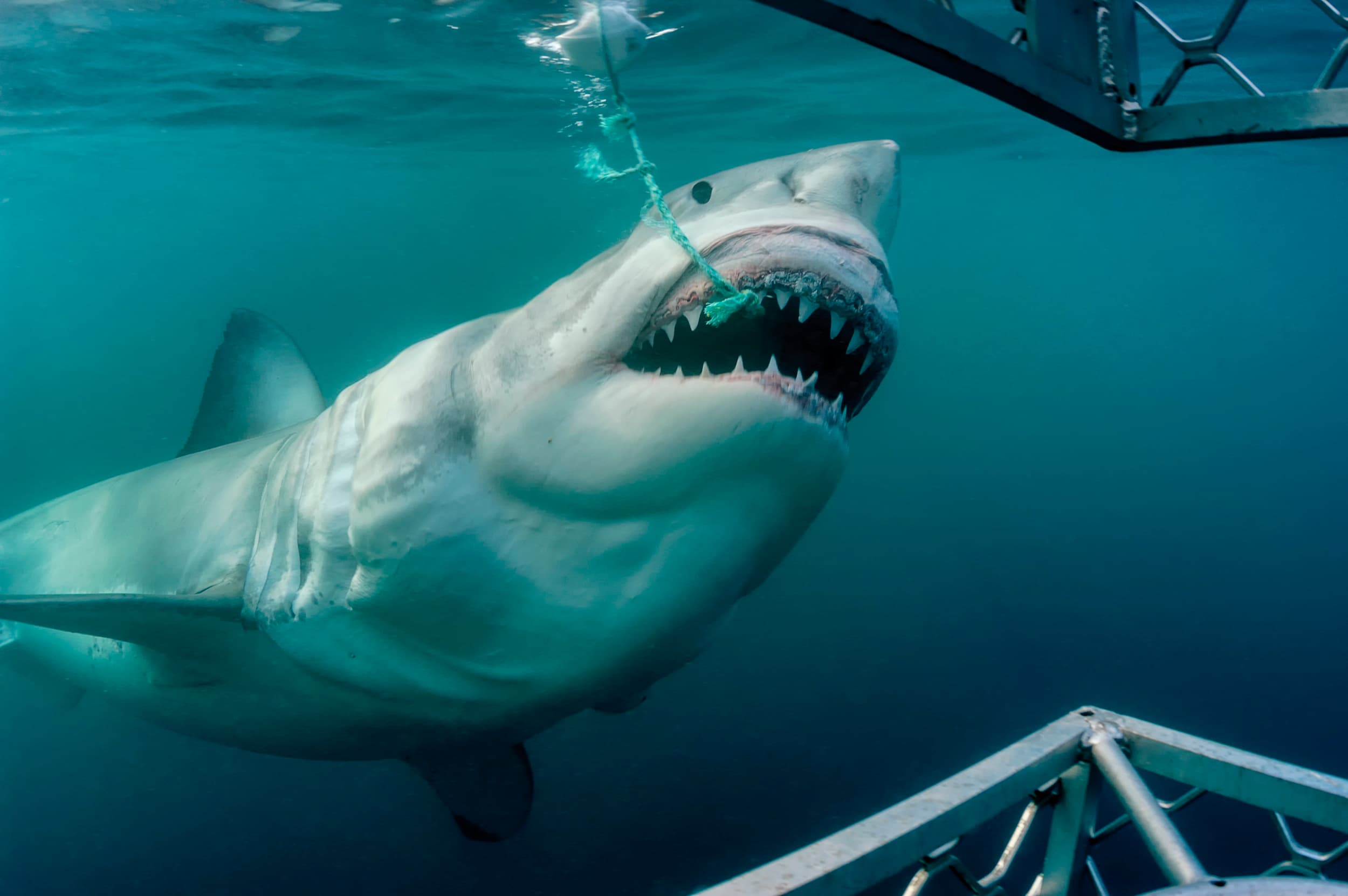
Sharks suffer from a bad reputation period… but only the great white is capable of arousing the fear and loathing it does – the others just don’t come close!
Much of that blame can be traced back to 1975 and Jaws, Peter Benchley’s seminal novel about a rogue great white that developed a taste for humans, along with the subsequent Steven Spielberg movie that turbocharged the myth.
While it made the former speechwriter for President Lyndon Johnson a rich man, Benchley later realised that he had created a myth that basically legitimised the killing of sharks.
To his great credit, Benchley went to significant lengths to try and reverse the trend he had helped to initiate. But that was all 35 years ago – so why is the myth of the relentless and ruthless apex predator still so powerful?
For that, we can thank the tabloid media and their quest for cheap gory headlines that sell newspapers and keep bums on sofas during the six o’clock “news”.
The Great White Shark Facts
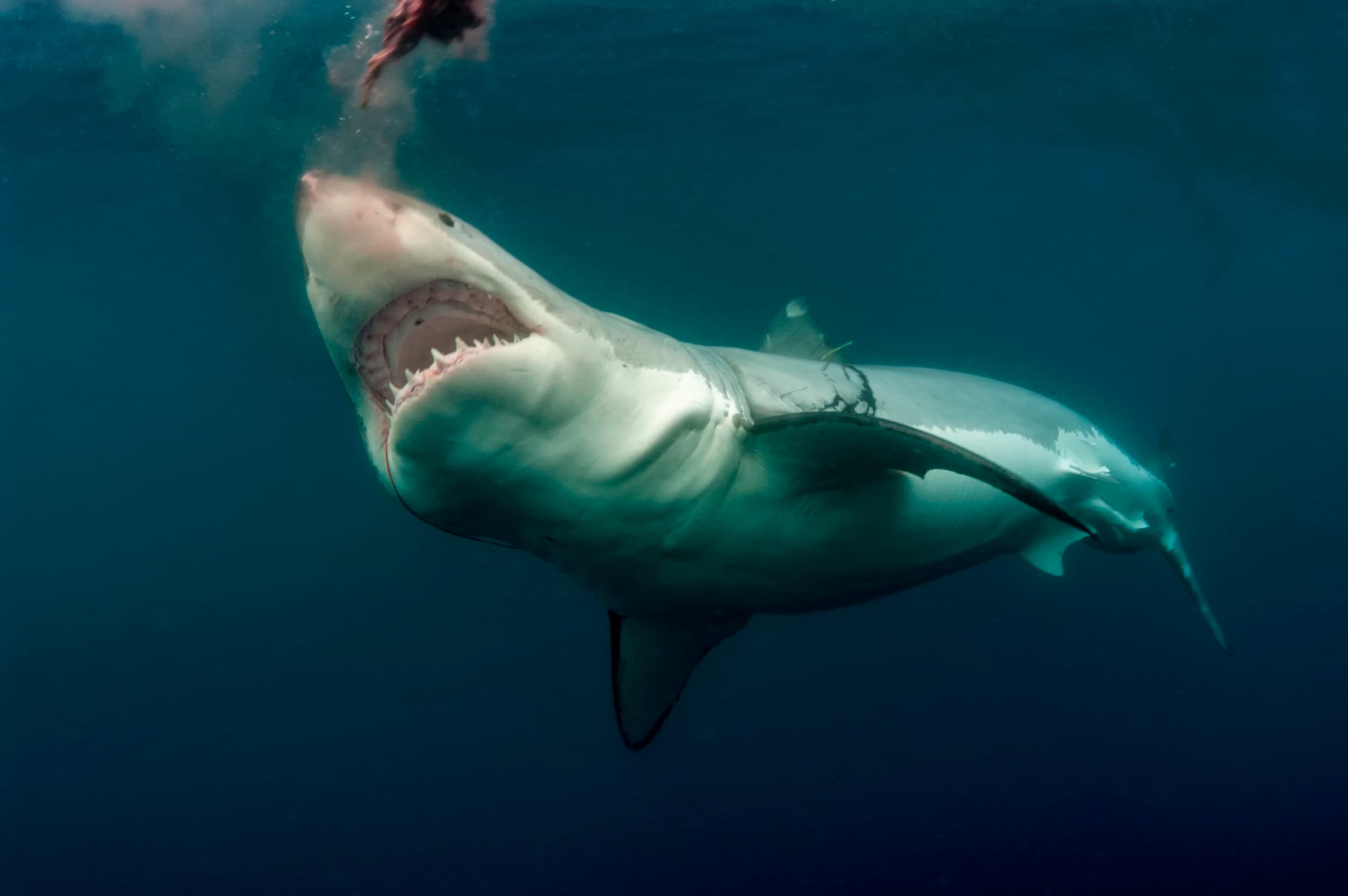
Statistically, the chances of being attacked by a shark are incredibly low – so low infact, that one study in the USA estimated that the chance of being attacked by a shark was 1 in 11.5m, and the chance of being killed by a bite is less than 1 in 264m!
Perhaps a better perspective is that each year in New York City, people bite other people 10 times more than sharks bite people worldwide…
Here in Australia, we have an excellent source of data with the Australian Shark Attack File (ASAF) compiled by Sydney’s Taronga Zoo.
The data in the ASAF is assessed and reviewed before it is included in the statistics, removing the sensationalism around these tragic events and enabling a more sombre and rational picture to be drawn.
The facts are that 2020 was a particularly bad year for shark attacks in Australia with 26 verified attacks, 22 of which were “unprovoked” by the victim and there was a sad total of 8 fatalities.
2014 was also a bad year with 23 verified shark attacks, 11 of which were unprovoked, and 5 fatalities.
In the 5 years between 2014 and 2020 there was an annual average of 24.4 verified shark attacks, 15 of which were unprovoked, and 1.2 fatalities.
As sad as those high 2014 and 2020 fatalities clearly were, to put the numbers in perspective, on average each year in Australia 8 rock fishermen drown and 23 scuba-divers die in Australia.
Furthermore, Surf Life Saving Australia estimates there are approximately 100m “visitations” in our waters each year by swimmers, surfers and divers. Which means that even in a really bad year like 2020, the risk of being a shark attack victim is 3.8m to 1 and a fatality 12.m to 1!
Seeing is Believing…
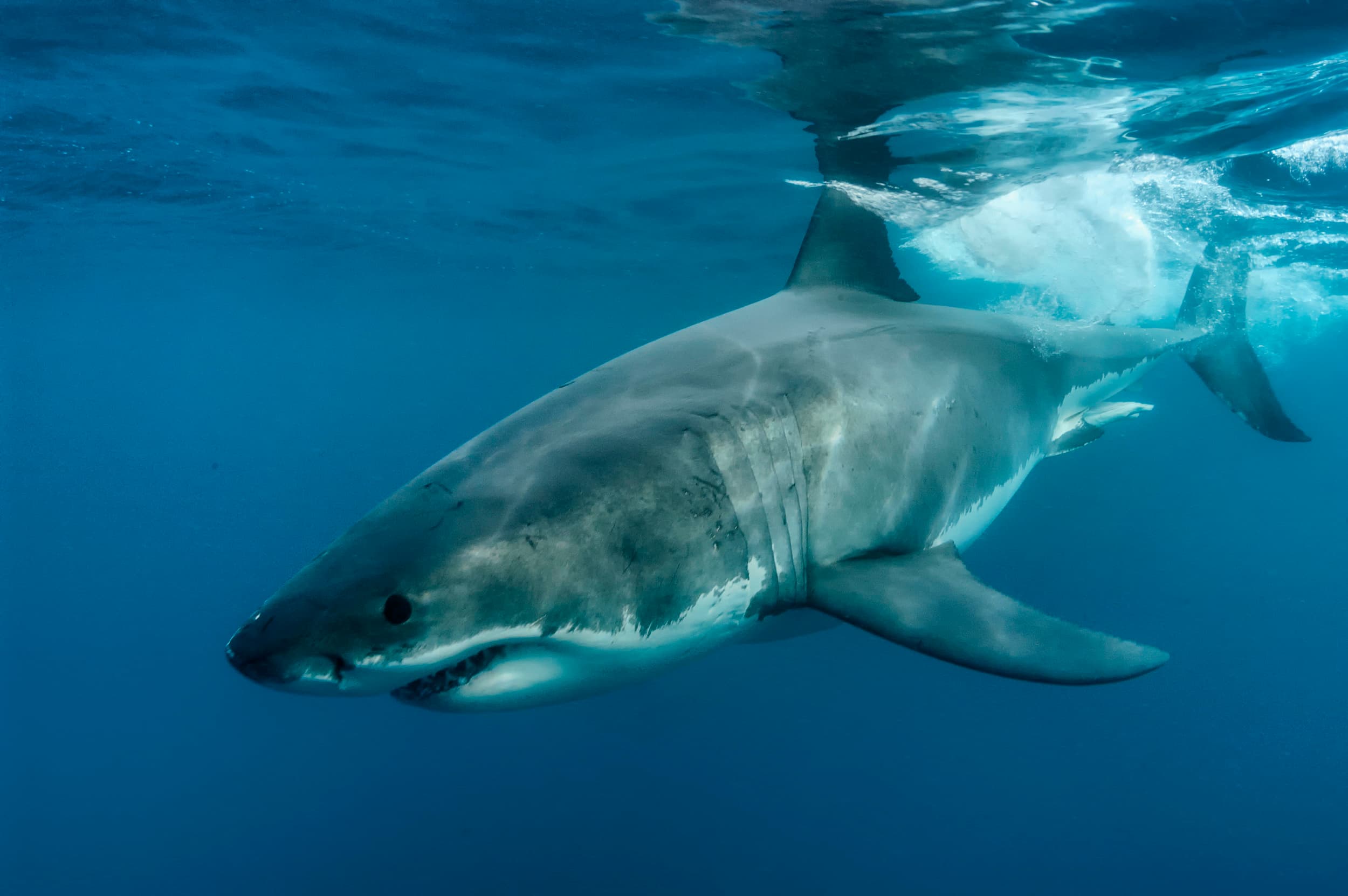
The great white shark, Carcharodon carcharias is the world's largest-known predatory fish – growing to an average size of around 4.5m in length, with large females reaching over 6m.
Truly impressive creatures that are superbly evolved, they are indeed brutally efficient at what they do. But if all you know about them is from the tabloid media and the majority of TV “documentaries”, then you may be a little confused…
How can such an apparently terrible creature be responsible for so few, but very tragic, deaths?
Let me be very frank… my first ever “big animal” trip was in 2003 to South Australia so that I could see great whites for myself. To even sign up for the trip I had to overcome my tremendous fear of sharks and I was absolutely petrified getting in the cage for the first time.
I don’t think I had slept at all the previous night as my mind raced through the oh-so many things that could go wrong!
But not only did I get hooked on big animal experiences in general on that trip, what I saw was the catalyst for the journey I have been on ever since to conceptualise how the oceans and its large creatures, animal aggregations and apex predators all work in the great scheme of things.
Simply stated, you have to see these animals for yourself to really start to understand.
South Australia
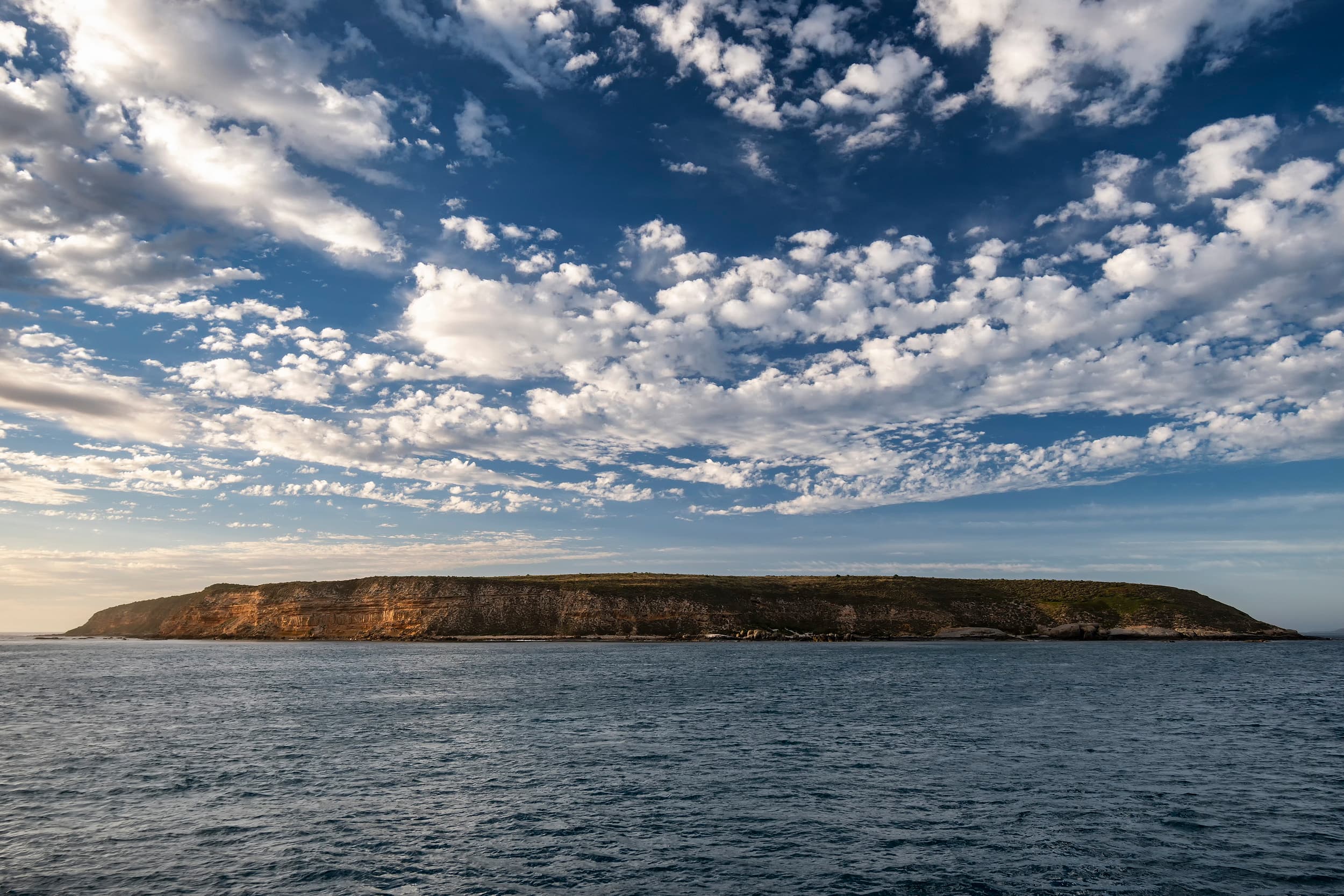
Australia is one of only three places in the world where it is possible to cage dive with the great white shark – the other two are Gansbaai, near Cape Town in South Africa and Isla Guadalupe, off from Baja California in Mexico.
We can thank Australian diving icons Rodney Fox, together with Ron and Valerie Taylor, for pioneering a way to do that – the popularity of which has, in many ways, been the catalyst for “big animal” diving globally.
Rodney is the owner of the most well-known shark bite injuries in the world after he miraculously survived a great white attack while spearfishing off from Aldinga Beach, 50km south of Adelaide in 1962.
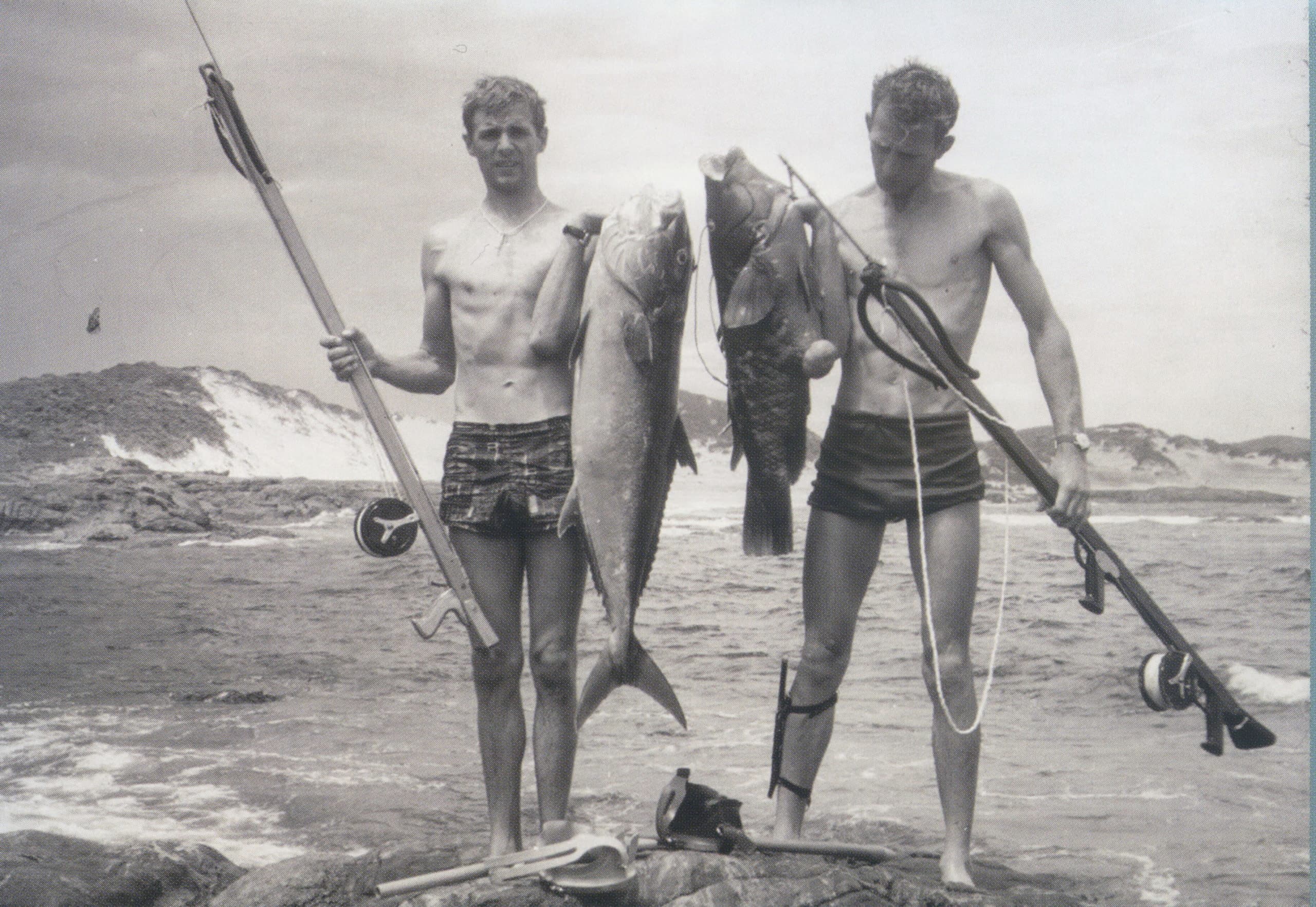
Rodney’s story, is simply incredible and his book ‘Sharks, the Sea and Me’ left me in awe of what this modest man from South Australia has made of his life!
The injuries from that horrendous attack required 462 stitches in his chest, together with 92 in his right arm and to this day the attack is considered as the most severe ever to be survived.
But survive he did and one year later to the day he was back in the water competing in a spearfishing competition!
Over time Rodney came to the realization that despite the horrific nature of what had happened to him, great whites are actually extremely misunderstood creatures and the attack was in fact a highly unusual event!
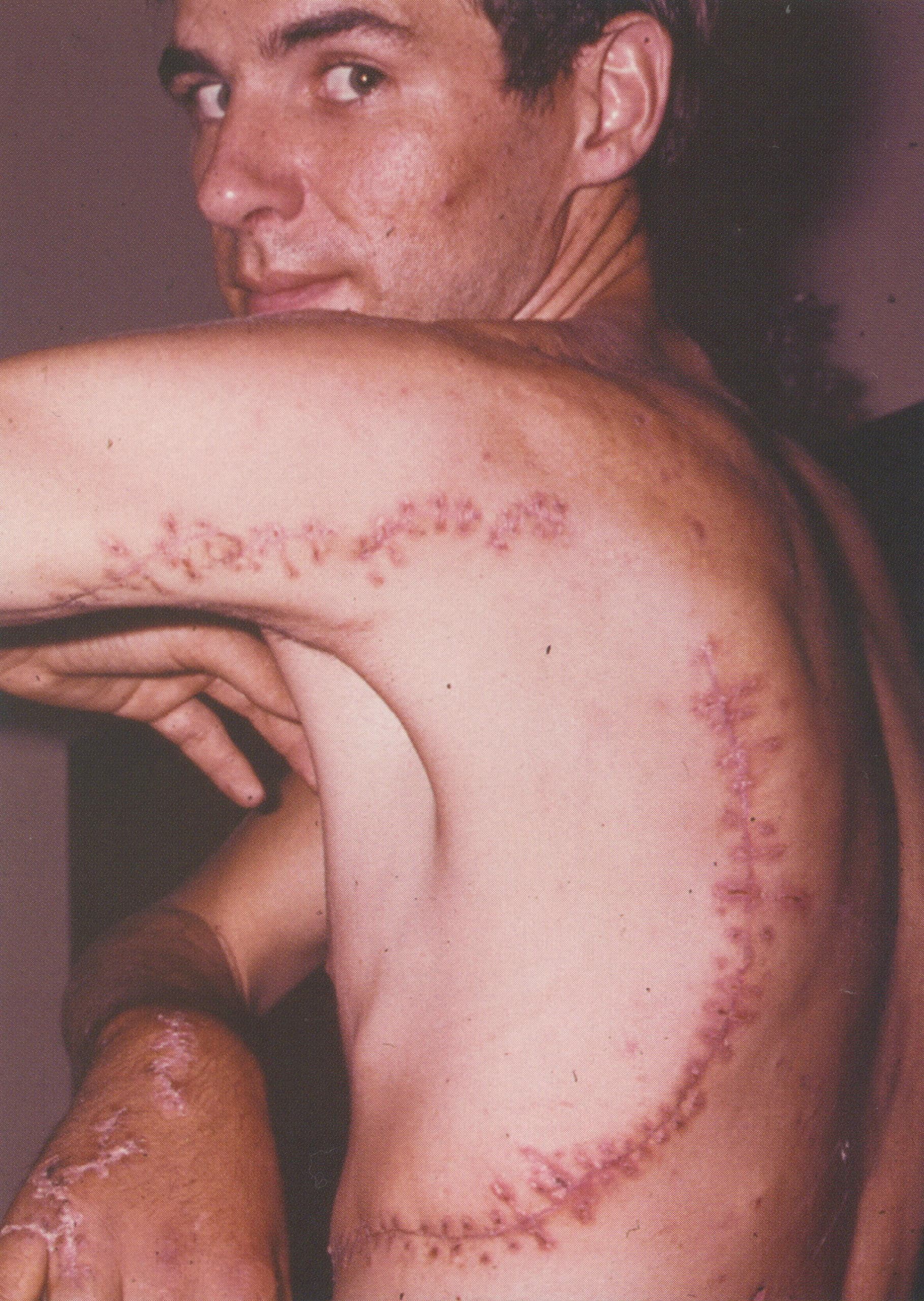
But he also knew that to change this misunderstanding people needed to see the sharks in their natural environment – but how to do that safely?
The answer came to him at Adelaide Zoo while showing his young niece the lion enclosure… How about instead of having the potentially dangerous creatures in a cage to protect the audience from them, why not put the audience in a cage among the creatures?
Rodney went on to build a very successful business that allows divers, underwater photographers and motivated tourists to do just that!
In The Cage…
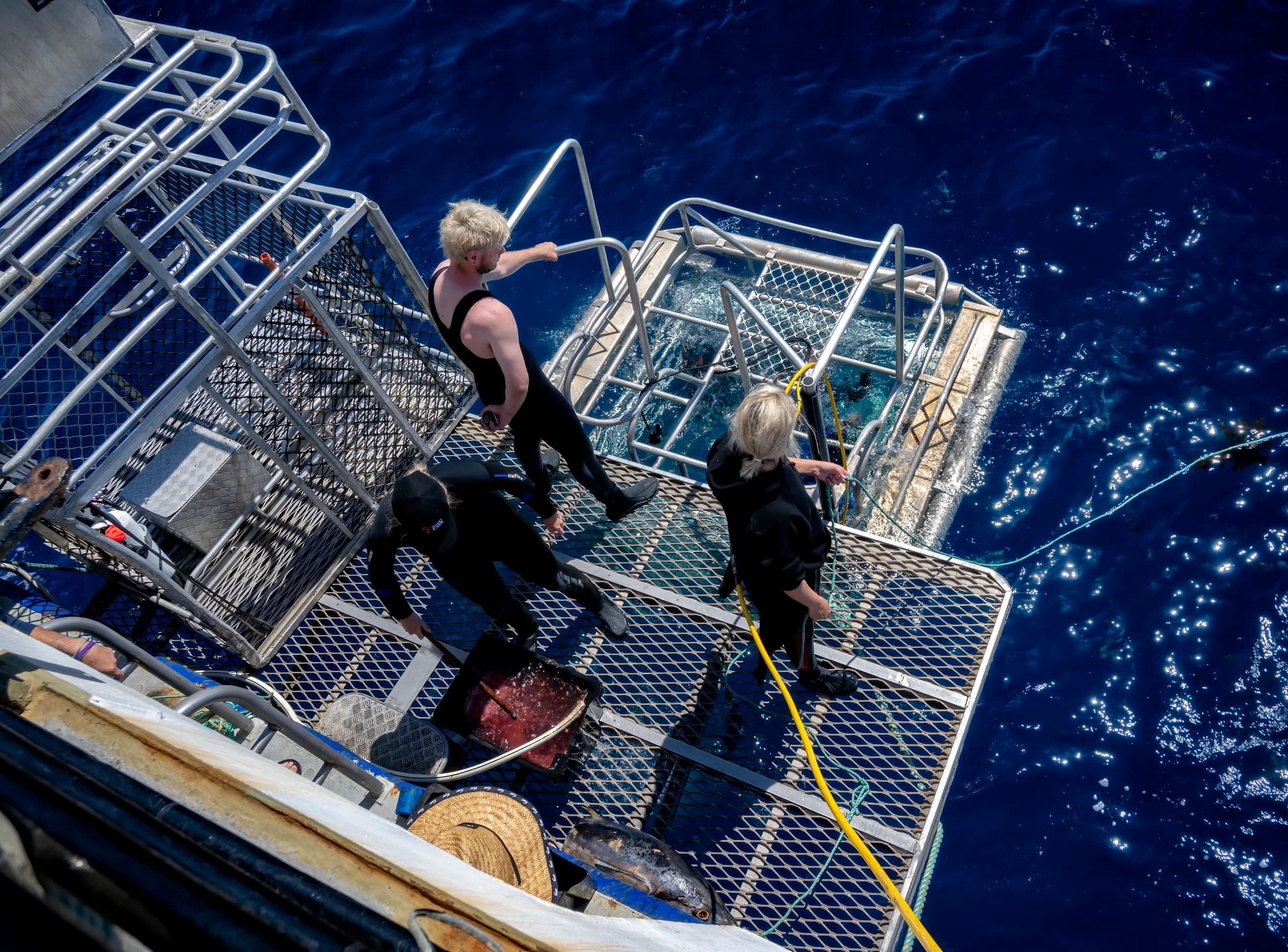
Getting in one of those shark cages for the first time is a pretty hard feeling to describe – kind of a unique blend of danger mixed with excitement, together with ample servings of doubt and fear…
One thing is certain though, the adrenalin will be pumping.
But prior to entering the cage you will have been closely observing the hard work that goes on to get the sharks near the boat. You are after all at the Neptune Islands in the area of southern Australia known, somewhat appropriately, as the Great Australian Bight.
The Neptunes are regarded as one of the true hotspots for great white sharks, thanks to the large colonies of both New Zealand fur-seals and Australian sea lions on the islands – animals rich in the dense fat that is the food of choice for great whites.
So… if it’s such a hotspot, why is all that effort required? Given the ferocious reputation of these sharks, surely, they should be queuing up at the back of the boat for all the snacks being doled out?
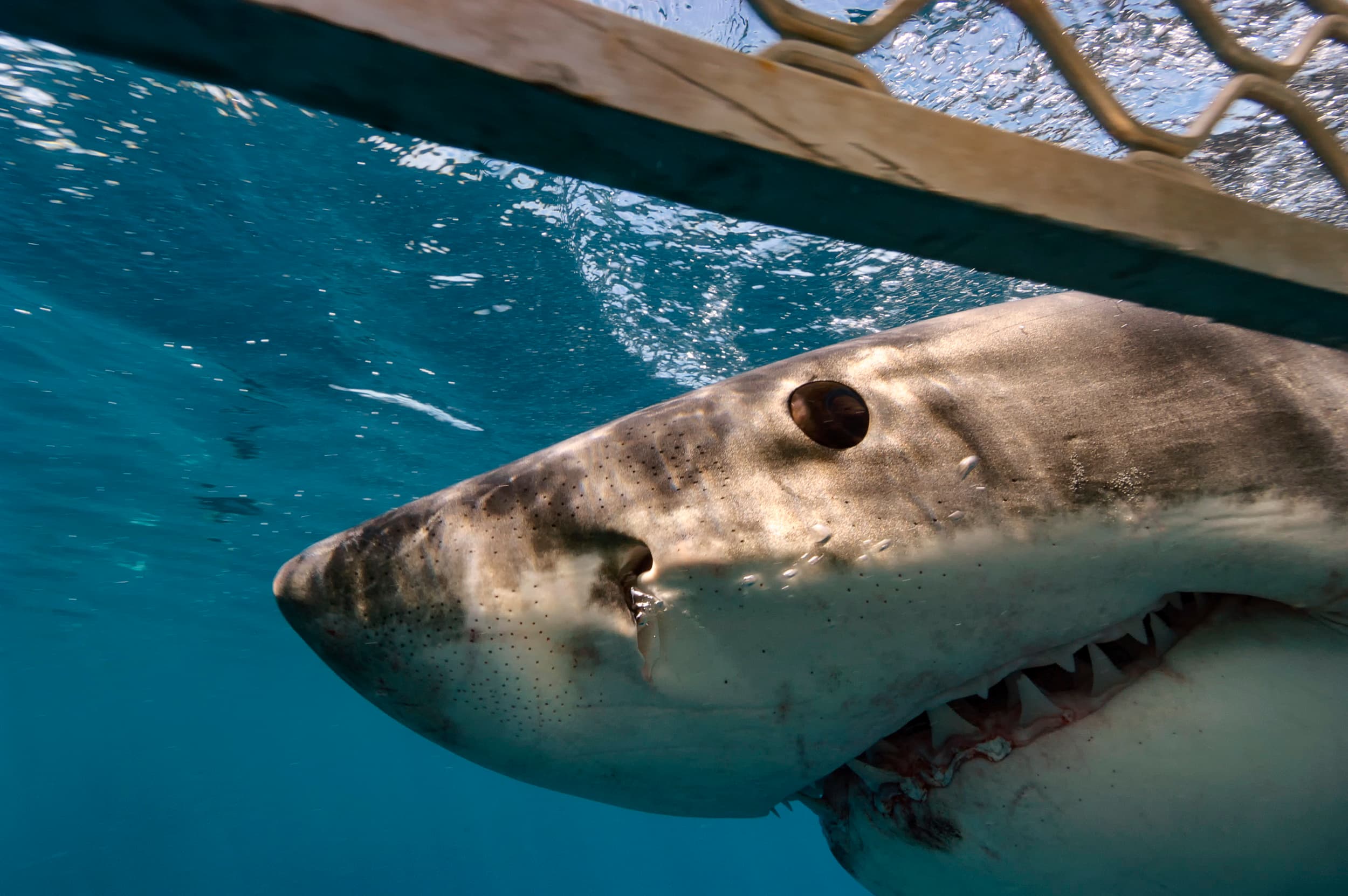
And therein lays the intriguing paradox of these incredible creatures, with their public persona so ingrained into our psyche at considerable odds with the reality!
Yes, indeed they are stunningly effective hunters, but not the marauding, “all you can eat” killing machine the tabloid media would have you believe. Which is a perspective you can only truly reach by seeing them for yourself.
What you observe in the cage is the caution that have made great whites the apex shark predator. Attracted to the boat by the berley in the water, they will check out its source and may well eye the lumps of dead tuna in the water.
But they do that carefully and thoroughly… particularly the mature ones. No manic attacks, just a considered evaluation of the risks and actually going for the tuna bait seems to be a function of two non-linear factors – how hungry the individual shark is and what does it think the risk is.
Great white sharks are believed to go at least 2-3 weeks between high-fat meals, such is the nutritional value of seals and sealions to them. So, if they have eaten recently, they may not even appear around the boat.
Whereas if they are in the third week, their hunger will quickly overcome their natural caution.
How to Do It?
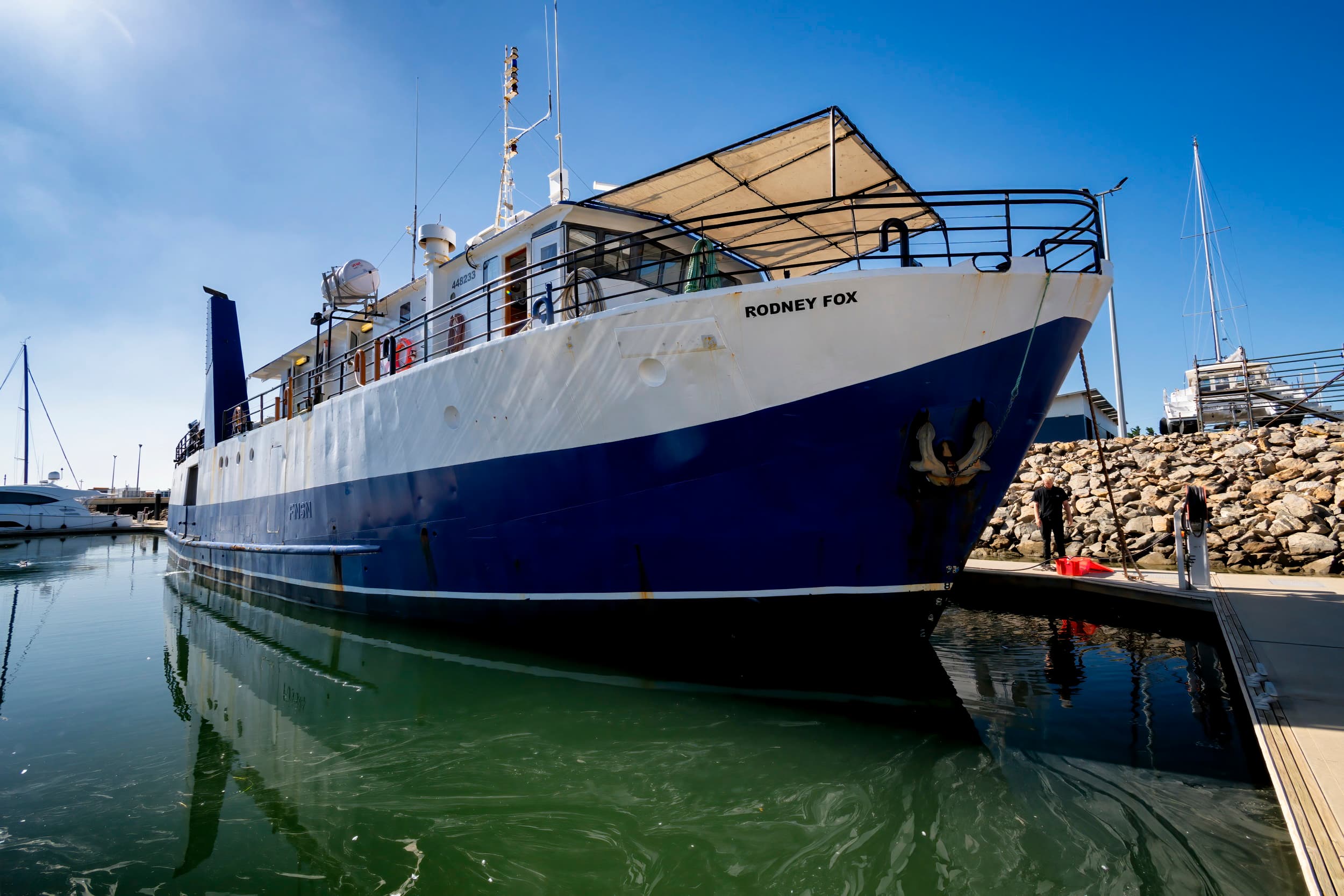
The Neptune Islands is the only location in Australia where cage diving with great white sharks is allowed, albeit under quite strict regulations drawn up by South Australia’s National Parks and Wildlife Service, with support from the CSIRO.
Three operators have been licenced, all of which are based out of Port Lincoln in the Spencer Gulf, a short 30-minute flight from Adelaide. Two of the operators, Adventure Bay Charters and Calypso Star Charters, provide round-trip day tours while the third Rodney Fox Shark Expeditions is focused on 3-5 day trips.
Both round-trip operators provide excellent tours and have won awards for what they do, but it has to be said they are more of a service for tourists than divers and underwater photographers.
The Rodney Fox trips on the other hand is a much more “immersive” experience that caters for divers and underwater photographers along with non-divers who want more than bragging rights.
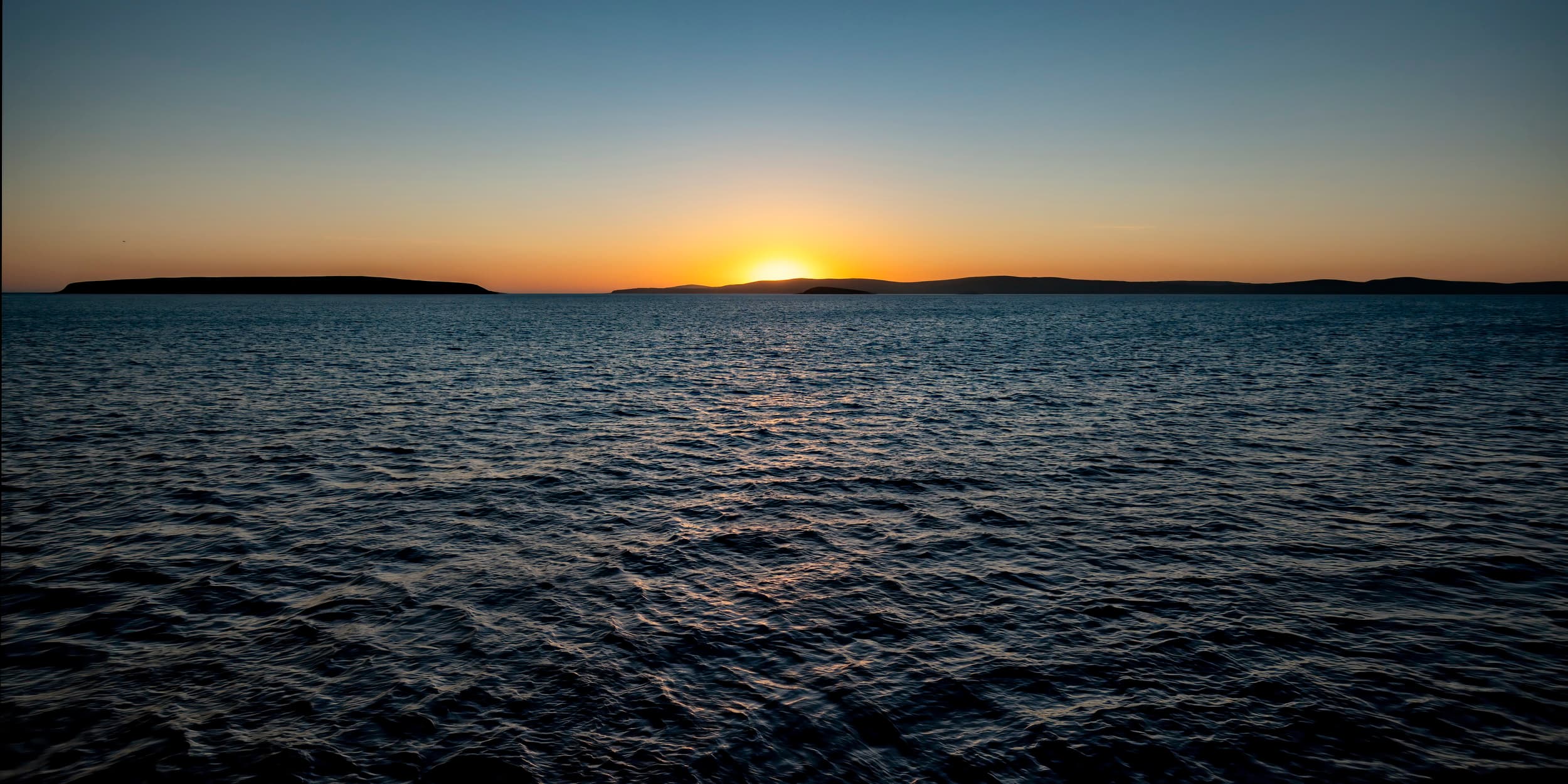
Rodney Fox retired back in 2000, after handing over to his son Andrew who has very much inherited his father’s passion for great white sharks. A talented underwater photographer, Andrew’s talks on the way down to the Neptunes are essential watching if you want to understand these animals.
Andrew illustrates his talks with his images, which are jaw-droppingly good – I have never seen anything quite like them and they truly reflect his knowledge, understanding and respect of the sharks!
The support crew are excellent at reading the behaviour of the sharks and very adept at getting the tuna baits to the back of the cage, creating photo-opportunities like few others!
To witness the sheer intensity of an attacking great white shark when they commit and go for that bait is something incredible to see…
Truly addictive!
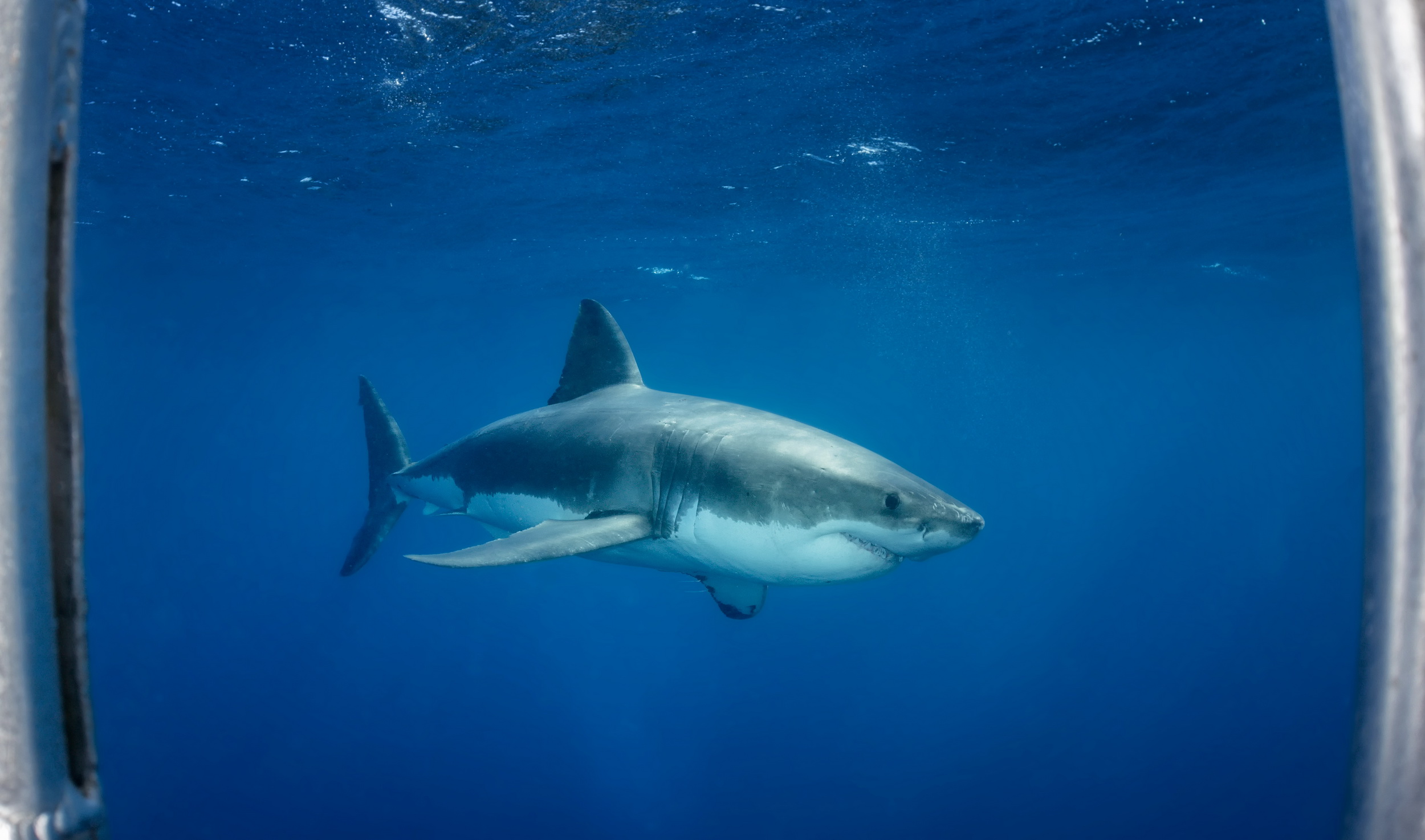
Don Silcock
In more normal times Don is based from Bali in Indonesia, but is currently hunkered down in Sydney… His website Indopacificimages has extensive location guides, articles and images on some of the best diving locations in the Indo-Pacific region and “big animal” experiences globally.
For more about Big Animal Diving try:
